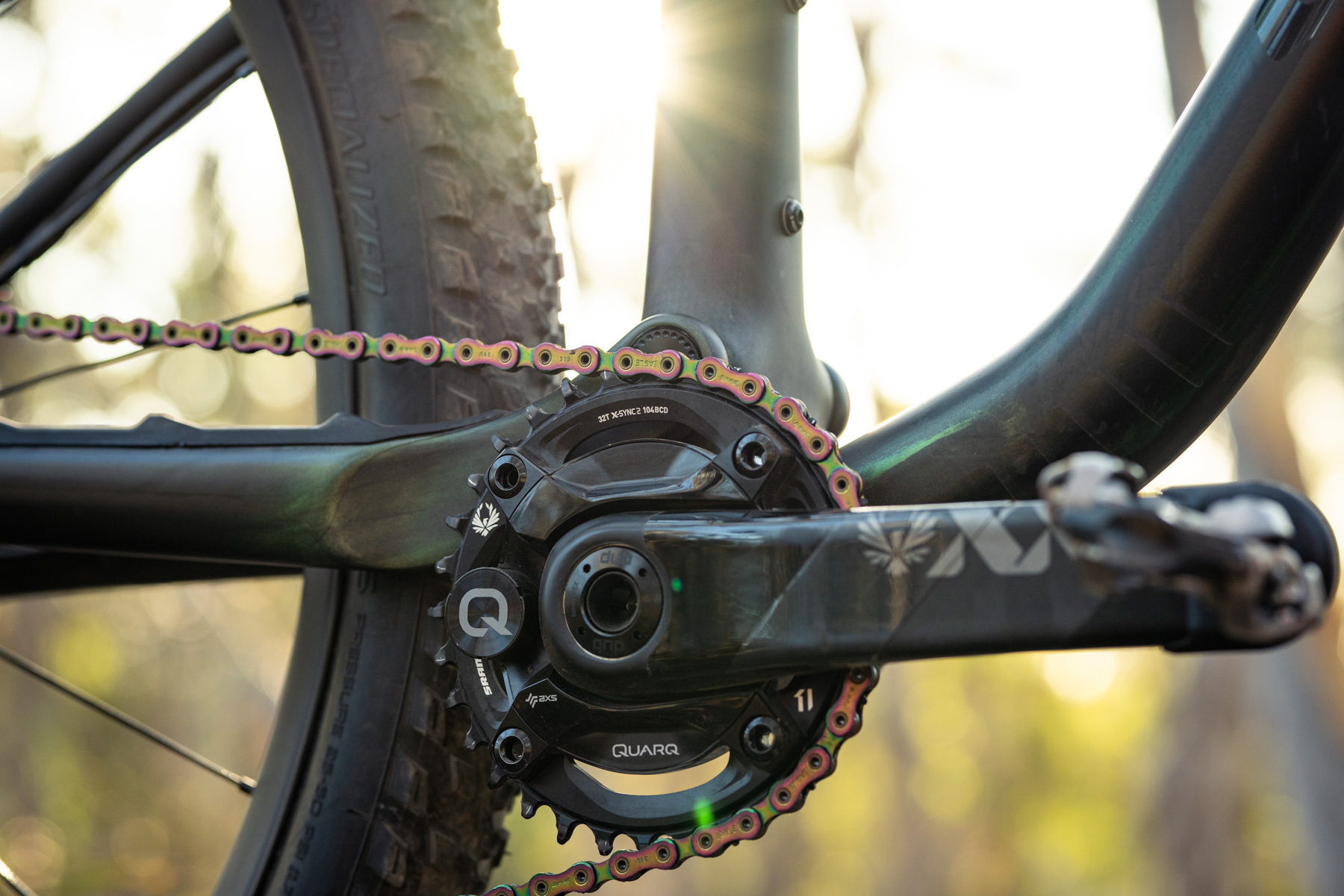Excellent Accuracy
SRM’s mountain bike power meters are famous for their outstanding accuracy, which is usually a precision rate of +/- 1%. The high accuracy level is especially crucial when analyzing the training sessions’ and races’ performance data. For example, a rider – either during a training session or a race – may find themselves in a situation where they have to climb steep uphill. In this case, they would see that the power output reading is also very consistent. In other words, they would not have to push too hard early in the climb to save power but would be able to establish a very steady exertion level.
Immediate Adjustments
Given that SRM power meters provide real-time data feedback, a rider can immediately adjust their effort. For instance, consider a race scenario. If one approaches a sequence of very short but intense hills, they can look at the real-time wattage output on their device. Consequently, they will know exactly how much power to apply to every pedal stroke, ensuring that the energy is not wasted at any part in the race.
Integration with Training Programs
Given the fact that SRM power meters integrate seamlessly with a variety of training programs, they are particularly favored by professional cyclists. For example, in the case of a periodized training plan, a rider’s coach can look at the power output data to decide if the weekly load should be adjusted – whether the slack should be cut or the rider should be encouraged to push on a bit more in order for the training plan to be more effective. Additionally, the models are also tough and reliable, able to function during very muddy, wet, or extremely dusty races where other devices may fail. This may be an important advantage for riders who may be preparing for such races as the Leadville 100, where both terrains and weather can be highly volatile. Finally, they boast a long battery life, which means that they can go on for hours of riding. For example, when cyclists take part in a multi-day stage race, not having to worry about charging or any technical issues for days can be a significant advantage.
Durable Construction
The SRM mountain bike power meters are designed to conquer the harshest conditions, which is reflected in the high-quality product design. The apparatus is encased in the high-strength material, which allows to resist the hardest and longest impacts and vibrations, and prevents malfunction caused by being used in mud, water and varying temperatures. This quality is vital for uses in mountain biking as the conditions are harsh.

Impacts and Vibrations
The terrain in mountain biking is often rocky, so it involves both significant impacts and continuous vibrations. To ensure that the device is capable of registering the power output regardless of the rider’s activity, the SRM company developed the device that is tested in all conditions. For instance, during the Downieville Downhill race, a rider whose data was tracked registered 549 watts for power output with three seconds average rollings. This result was recorded despite there being constant impacts and falling rocks and roots that the rider had to go through during the race.
Water and Mud
SRM meters resist water and mud in their design. The gadget does not cease working during events such as the Pisgah Stage Race, in which weather conditions change frequently, resulting in precipitation and mud. While inaccurate data may be recorded by other riders, their research will not differ, allowing them to analyze it correctly.
Temperature
The temperature test is also used in the SRM company. The video shows the product heating and cooling in large external equipment. Leadville 100 is a popular race for training, and riders’ experiences show that their SRM devices work in different weather conditions behind standard testing.
Extreme Battery Life
The long-lasting life of the devices’ batteries is one of the benefits associated with the SRM mountain bike power meters. Such a characteristic is extremely advantageous for endurance riders or multi-day events. SRM power meters can run approximately 3,000 hours on one battery, which gives maximum confidence for cyclists that the device will not fails when it is needed most. Such characteristics are critical for athletes who engage in extensive training or competitions.
Long Training Days
During the long training such as an 8-hour endurance ride that cyclists would perform as preparation for the Cape Epic, the SRM power meter will enable riders to track the power date throughout the time. Considering that one is not forced to charge the device during this time, such activity allows individuals for making on the spot adjustment. Additionally, such a characteristic and helps to analyse the time for a specific terrain, power output, or any other factor that should be noted in practice.
Multi-Day Competitions
SRM power meters long-lasting battery feature becomes critical during multi-day competitions. For example, the BC Bike Race is a multi-day event where riders should be prepared to ride along with the demanding course for several days. Their power meters will be collecting valuable data for the duration of the even not requiring daily charging. Such factor is critical for analyses of a rider’s performance for making modifications over the course of time for a better strategy with cumulative fatigue and recovery.
Low Maintenance and Ease of Use
In our practice, we have used a variety of power meters, and it may be observed that under the most predictable circumstances, SRM power meter requires a minimum level of maintenance. The limited need for charging joining with the fact that batteries may only need replacement after a significant number of hours. The requirement is reduced even further making the use of such devices beneficial for endurance riders who tend to travel or use their equipment in remote areas.
Easy Integration With Bike Computers
One of the key advantages and benefits of SRM power meters is the near seamless compatibility with bike computers. Once connected, cyclists can view real-time data as it displays on both their bike computer and smartphone or tablet. Such compatibility allows the power meters to be connected to devices such as Garmin or Wahoo. Garmins and Wahool devices, among other premium and budget bike computers, are stationed on the bikes for easy and timely access by the rider, and they also provide analytics in the rider’s account. The bike computers display real-time data and also have the ability to replay from the saved data list. This feature is essential to the rider because the analytics inform users of the data types and insights available. Therefore, the seamless compatibility of the SRM power meters with bike computers, introduces the aspect of real-time data visibility on the rider’s dashboard (both biking device and smartphone). Thus, the SRM power meter can be connected to a bike computer, where the data is received by the cyclist in real time throughout the race.
Setting the SRM Power Meter to the Bike Computer
Riders find it easy to set the power meter to the bike computer. It is a plug-and-play setting. For example, if a rider is using a Garmin device, all he/she needs to do to connect to the power meter is to places the power meter alongside the device and then switches it on. The device will automatically search for the power meter and connect to it. The pairing process is not complicated. The time used to set up the pairing is minimal and the rider can connect quickly and without any unnecessary technical supports, timely enough to start the race without any further delays.
Data Display
Real-time data is then sent from the SRM power meter to the bike. The data that is displayed in real-time on the racers’ device includes output power, cadence, and acceleration dynamics during the race. For instance, during a race such as Tour de Gila USA 2014, a rider can keep monitoring his/her output power, thus adjusting the dynamics and speed of the race. Such abilities are realized as a result of the compatibility of the SRM power meter with the bike computers, which allows real-time display and syncing of data. Data saved in the device during a race can be retrieved for play back and further analysis of the rider for training and future race purposes, as well as performance trending through the devices’ accounts. Similarly, once the rider is done with the race, the Garmin device is synced it with the rider’s TrainingPeaks or even goes ahead to use the Strava. It is easy to manage data and the syncing with different premium apps through the application. Busy riders who have many other things to do after the race will find it easy to use a one-stop bike for a quick data analysis. It is easy and straightforward. It helps the rider with the easy management of data, thus the training schedule and periodic retrieval.

Comprehensive Data Analysis
The SRM mountain bike power meters are unique in that they are capable of providing advanced data analysis. This type of analysis is the most critical for optimizing training or performance strategies. The devices offer such information as average power, mean maximal power, and other essential data used in training. Similarly, the instruments provide data on cadence, heart rate, and torque. Finally, the equipment generates information about upright and level position and enables measuring of weather conditions and GPS data. This type of comprehensive and detailed data provides invaluable insights into an athlete’s activity. Overall, SRM mountain bike power meters are distinctive in their comprehensive approach to data tracking and analysis.
Detailed performance data
The data that can be automatically generated by the SRM power meters can be diverse. For instance, when riding through a mountain trail for training, the power meter will show the athlete data on power. The data will include averages and peaks. What is more, the results on the variability of power will help analyze the athlete’s capacity to be efficient when riding through uneven terrain. For instance, one can follow the spikes and dips in energy levels to see what parts of the trail should be paid more attention to and in which areas the level of ability needs improvement.
Integration with coaching strategies
The SRM power meters are also unique in the sense that coaches can adjust the training of the athletes to improve specific areas of their skills. For instance, if an analysis of the data received over the month shows that an athlete in question needs more training in, for example, the fourth and fifth power zones, this can be arranged. Not all the data can provide such versatile insights: for example, averages and means cannot be used to analyze specific patterns or trends.





